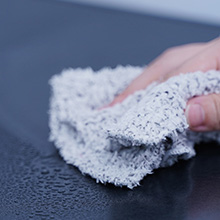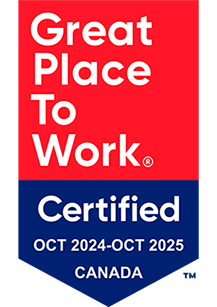Proper surface preparation is critical any time an Epoxy or Polyurethane is used to bond to another surface such as a container in a potting application or when used strictly as an adhesive to bond two or more substrates. Glossy surfaces or oil contamination will drastically reduce the bond strength or prevent bonding altogether.
 In a given bonded structure, the ultimate strength will be governed by the weakest link. For example; if the substrate surface is left contaminated, the epoxy or polyurethane will bond to the contaminant and the ultimate bond strength will be determined by the weakest of the two bond lines namely, the bond between the substrate and the contaminant and the strength between the epoxy and the contaminant.
In a given bonded structure, the ultimate strength will be governed by the weakest link. For example; if the substrate surface is left contaminated, the epoxy or polyurethane will bond to the contaminant and the ultimate bond strength will be determined by the weakest of the two bond lines namely, the bond between the substrate and the contaminant and the strength between the epoxy and the contaminant.
Generally speaking, the bond surfaces should be clean and abraded for optimum results. The tiny grooves left by abrasion provide the bond sites for the material to "grab onto". The width and depth of these groves make a difference depending on the material under consideration. In some cases small shallow groves will yield better results than deep wide grooves.
The following are some recommended procedures for surface preparation
Steel and Ferrous Metals
- Sandblast with clean sand or
- Immerse in a 10% solution of Sodium metal silicate for 10 minutes or
- Dip in 20% Phosphoric acid
Stainless steel may be cleaned with the following solution
- Concentrated hydrochloric acid...............47%
- 30% hydrogen peroxide...........................2%
- Formalin solution.....................................9%
- Water...................................................42%
The stainless steel is immersed in this solution for 10 minutes at 65oC.
Nonferrous Metals
Metals such as Aluminum, Aluminum Alloys and Copper tend to oxidize with time. The oxidized layer, which is loosely bonded to the metal itself, must be removed to maximize bond strength. this may be accomlished by etching sand blasting or thorough abrasion. In most cases, heavily scored surfaces provide the best bond strength.
If the metal was exposed to grease or oil, it should be thoroughly degreased prior to abrading. it is important to note that these metals oxidize rather quickly and therefore bonding should follow immediately after surface preparation.
Other metals such as Cadmium are difficult to bond under the best of circumstances and should be electroplated with silver for optimum performance. In some cases, an adhesion promoter that penetrates the into the metal is advisable.
Plastics
There are two basic types of plastics in common use today. Thermoset plastics that, as the name indicates, can not re-melt after solidification. Thermoplastics on the other hand can be re-liquefied after solidification by the application of heat.
Epoxy and Polyurethane compounds are thermoset plastics. Epoxy and Polyurethane substrates bond well to each other as long as the surfaces are clean and slightly abraded. As a note of caution, because epoxy and urethane parts are usually contaminated with traces of mould release, all mould release residue must be removed from the surfaces to obtain a strong bond.
Thermoset Materials
Satisfactory bond strengths can be achieved by solvent wiping and lightly sanding the surface to be bonded. Solvents used for this purpose should be carefully selected so as not to leave a film on the substrate. Cast epoxy and urethane components usually contain traces of mould release on the immediate surfaces. These contaminants are difficult to remove with solvent and the surfaces may have to be sand blasted for best results.
Thermoplastics
There are numerous versions of these materials available today. The best surface preparation will depend on the specific material being used. In some instances, the molecular structure of the plastic will tend to realign itself at certain temperatures and the best bond strengths are achieved when the adhesive employed is cured at these temperatures.
Special surface modifications
There are companies that specialize in modifying plastic surfaces for adhesive bonding, One of the better processes involve "reactive gas surface modification" which results in surfaces that are practically non-degradable during storage.
- As a rule, the thinner the bond line the stronger the bond.



